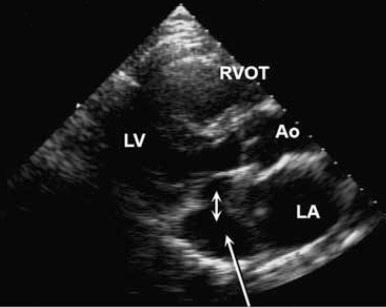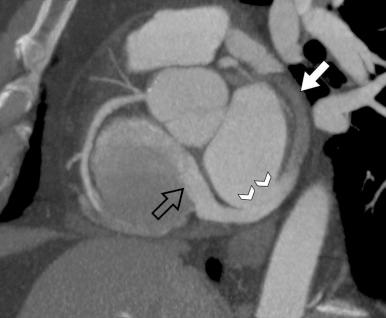Physical Address
304 North Cardinal St.
Dorchester Center, MA 02124
Unroofed coronary sinus syndrome is a spectrum of cardiac anomalies in which part or all of the common wall between the coronary sinus and left atrium is absent. Hearts with atrial isomerism and a left-sided superior vena cava (LSVC) entering a left-sided atrium are included in this chapter, despite the controversy concerning proper classification of such anomalies (see “ Atrial Isomerism ” under Morphology later in this chapter; see also Chapter 58 ).
Unroofed coronary sinus syndrome was unknown to cardiac pathologists before the era of cardiac catheterization and cardiac surgery. In 1954, Campbell and Deuchar referred to instances of LSVC attached to the left atrium. Although they did not have such an example in their own series of LSVC, they appreciated that in such cases there was no true coronary sinus. That same year, Winter, a radiologist at Hahnemann Hospital in Philadelphia, published a report that identified persistent LSVC attached to the left atrium, and 2 years later, Friedlich and colleagues identified by cardiac catheterization LSVC entering the left atrium in four patients. An isolated case was also reported by Tuchman and colleagues in 1956. However, true understanding of the morphology of the syndrome awaited the classic paper by Raghib, Edwards, and colleagues in 1965. The descriptive phrase “unroofed coronary sinus” was first used by Helseth and Peterson in 1974.
In cyanotic patients with a communication between the left and right SVC, the LSVC was first ligated (appropriately) by Hurwitt and colleagues in 1955 and then by Davis and colleagues in 1959. In 1965, Taybi and colleagues reported a ligation and mentioned “transferring the left SVC to the right atrium,” but presumably this was unsuccessful, because no further details were given. The first report of successful repair was from the Mayo Clinic in 1963. In this case, a tunnel was constructed from the posterior wall of the left atrium. In a second case, a large pericardial atrial baffle was constructed that corrected the anomalous connection of both the SVC and the inferior vena cava (IVC) to a left-sided atrium. This procedure was also described by Helseth and Peterson in 1974.
In one form of unroofed coronary sinus syndrome, the coronary sinus does not exist, because the common wall between it and the left atrium is absent. A persistent LSVC, which usually becomes continuous with the coronary sinus, connects to the left upper corner of the left atrium. The site of connection of the LSVC to the left atrium appears to be constant and lies between the opening of the left atrial appendage anteriorly and slightly superiorly, and the opening of the left pulmonary veins posteriorly and inferiorly. The pulmonary veins may enter the left atrium more superiorly than usual in this form of the syndrome.
A coronary sinus atrial septal defect (ASD) is present in the posteroinferior region of the atrial septum in the usual position of the ostium of the coronary sinus (see Chapter 30 , Fig. 30-5 ). The ASD is separated from the atrioventricular (AV) valve ring by a remnant of atrial septum (in contrast to an ostium primum ASD), and its posterior margin is formed by the atrial wall where it joins the IVC. There may be a separate foramen ovale ASD or a single large ASD formed by the confluence of both defects. The coronary sinus ASD may be confluent with an ostium primum ASD, or there may be a common atrium. Because the coronary sinus does not exist, individual coronary veins connect separately to the inferior aspect of the left atrium. Some also connect to the right atrium.
Of considerable surgical importance is the fact that the left brachiocephalic vein is absent in 80% to 90% of cases of unroofed coronary sinus syndrome and LSVC. The right SVC is frequently small and may be absent. The IVC not infrequently crosses to the left side below the diaphragm to enter the left hemiazygos vein, which joins the LSVC. The hepatic veins usually enter the inferior aspect of the right atrium, but they too may enter the inferior wall of the left atrium. When all the systemic veins enter a morphologically left atrium, total anomalous systemic venous connection is present (see Chapter 31 ).
In some cases, the syndrome is characterized by a completely unroofed coronary sinus without a persistent LSVC. Such cases consist of a coronary sinus type of ASD and total absence of the coronary sinus because of absence of the partition between it and the left atrium.
Another form of the syndrome is characterized by a partially unroofed midportion of the coronary sinus (also called biatrial opening of coronary sinus or coronary sinus to left atrial window or fenestration ). In this anomaly, an aperture is present in the midportion of the wall between the coronary sinus and left atrium. Through this aperture, a left-to-right or right-to-left shunt occurs, depending on whether obstruction is present to left atrial or right atrial outflow. When this rare form of unroofed coronary sinus syndrome occurs as an isolated lesion, there may be a large left-to-right shunt. It has also been reported as a major cardiac anomaly associated with tricuspid atresia, recognized only after the Fontan repair has elevated the right atrial pressure and produced a right-to-left shunt.
When midportion unroofing occurs in the presence of LSVC, there is a right-to-left shunt into the left atrium.
Particularly in the presence of an atrioventricular septal defect (see “Completely Unroofed Coronary Sinus with Left Superior Vena Cava” under Morphology in Chapter 34 ), the coronary sinus ostium may open into the left atrium rather than the right. Also, a localized unroofing of the sinus may occur just before it enters the ostium of the coronary sinus, resulting in a coronary sinus ASD with preservation of the coronary sinus (see “Coronary Sinus Defect” under Morphology in Chapter 30 ). Such anomalies can be considered to be unroofing (or absence) of the terminal portion of the coronary sinus.
As indicated, when a completely unroofed coronary sinus with persistent LSVC is present, both the left and right pulmonary veins may enter the left atrium more superiorly than usual. Sometimes this condition is accompanied by a mild or moderate narrowing between the portion of the left atrium to which the pulmonary veins are attached (the common pulmonary venous chamber) and that to which the LSVC, left atrial appendage, and mitral valve are attached (see “Relationship of Cor Triatriatum to a Left Superior Vena Cava” under Morphology in Chapter 32 ).
Unroofed coronary sinus syndrome has as its most common major associated cardiac anomaly an atrioventricular septal defect, not infrequently with a common atrium (see Chapter 34 ). Interestingly, atrioventricular septal defects are more commonly associated with persistent LSVC than are other types of ASD.
Many patients with an LSVC connecting to a left-sided atrium have atrial isomerism (see Chapter 58 ), and the majority of such patients have an atrioventricular septal defect. In an unpublished autopsy series from GLH of 26 hearts with the LSVC connecting to the left-sided atrium, only 3 were examples of classic unroofed coronary sinus syndrome; 23 hearts had atrial isomerism, 17 with bilateral morphologically right atria (most with asplenia) and 6 with bilateral morphologically left atria (most with polysplenia). Of the 23, 20 had an atrioventricular septal defect in addition to numerous other cardiac anomalies. When bilateral morphologically right atria are present, the LSVC enters the left-sided right atrium behind a typical crista terminalis and is not therefore an example of unroofed coronary sinus, even though the coronary sinus is usually absent. When bilateral morphologically left atria are present, the LSVC may or may not be part of an unroofed coronary sinus syndrome. In such cases, however, the coronary sinus is frequently absent.
In most cases, diagnosis of unroofed coronary sinus syndrome is made by two-dimensional echocardiography and confirmed at operation ( Fig. 33-1 ). Demonstration of an LSVC by catheter passage into the vein or by cineangiography suggests the diagnosis, which is confirmed at operation if the LSVC can also be shown to drain into the left atrium. Diagnosis of a partially unroofed midportion of the coronary sinus can be made by cineangiography after injection into the right atrium, when right atrial pressure is higher than left (e.g., after the Fontan operation). Konstam and colleagues have pointed out that radionuclide angiography can be diagnostic, because intravenous injections into the left arm show much larger right-to-left shunting than those into the right arm. Diagnosis sometimes can be made by cross-sectional, contrast, and transesophageal echocardiography. Contrast-enhanced gated multidetector computed tomography is also useful for diagnosis ( Fig. 33-2 ). Often, however, the diagnosis is made by the surgeon viewing external and internal morphology of the heart at operation.


Cyanosis from right-to-left shunting dominates the clinical picture of isolated completely unroofed coronary sinus with persistent LSVC and determines its natural history. In the series of Quaegebeur and colleagues, cyanosis was mild (all patients were younger than 17 years), but it was severe in some older patients in other series.
Cerebral embolization manifested by transient ischemic attacks or stroke and brain abscess complicate the life history in 10% to 25% of patients ( Table 19-1 ). This situation is similar to that in other types of right-to-left shunting. Presumably, life expectancy is considerably reduced by these complications and by other problems associated with increasing cyanosis and polycythemia.
Anesthesia and preparation of the patient for repair of isolated completely unroofed coronary sinus with persistent LSVC are as described in Section III of Chapter 2 . When the diagnosis is known preoperatively, the anesthesiologist inserts a pressure-monitoring line into the left external or, preferably, internal jugular vein.
Operation may be done with cardiopulmonary bypass (CPB) at 25°C and the usual direct caval cannulation (see “Clinical Methodology of Cardiopulmonary Bypass” in Section III of Chapter 2 ); venous blood from the LSVC is collected with a sump sucker connected to the pump oxygenator. Alternatively in infants, a single venous cannula and repair during hypothermic circulatory arrest may be used. Myocardial management is conducted as for other cardiac operations (see “Methods of Myocardial Management during Cardiac Surgery” in Chapter 3 ).
Become a Clinical Tree membership for Full access and enjoy Unlimited articles
If you are a member. Log in here